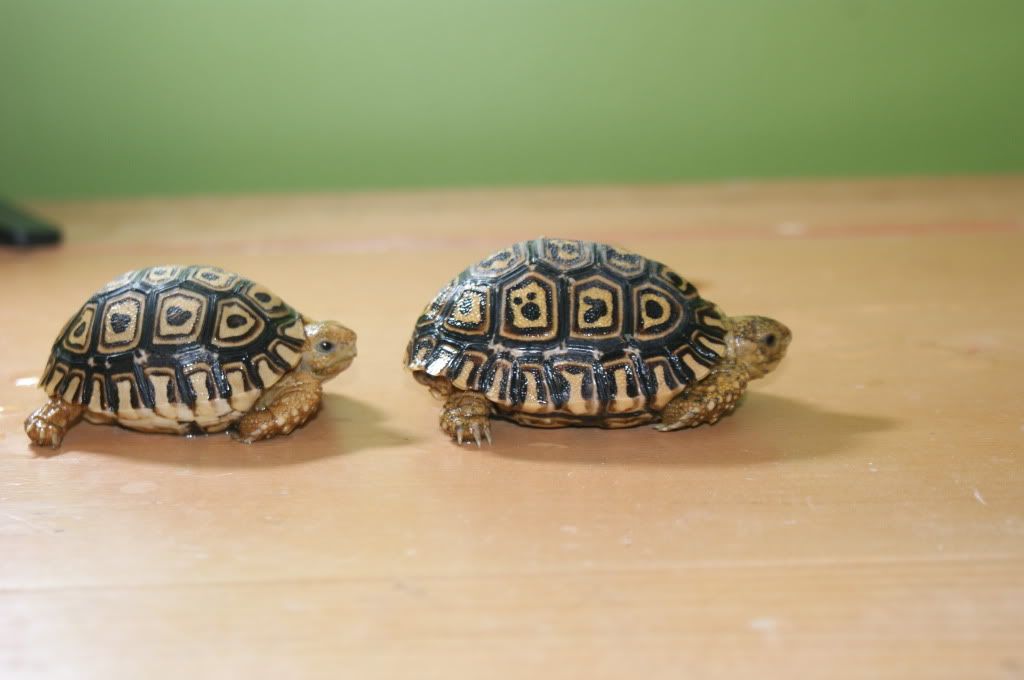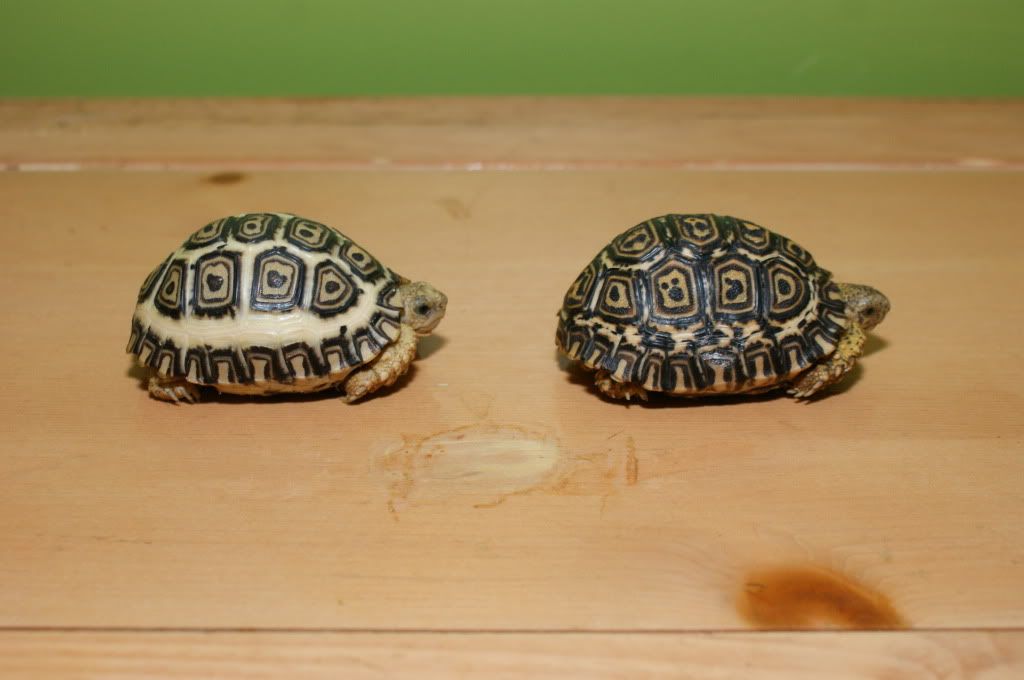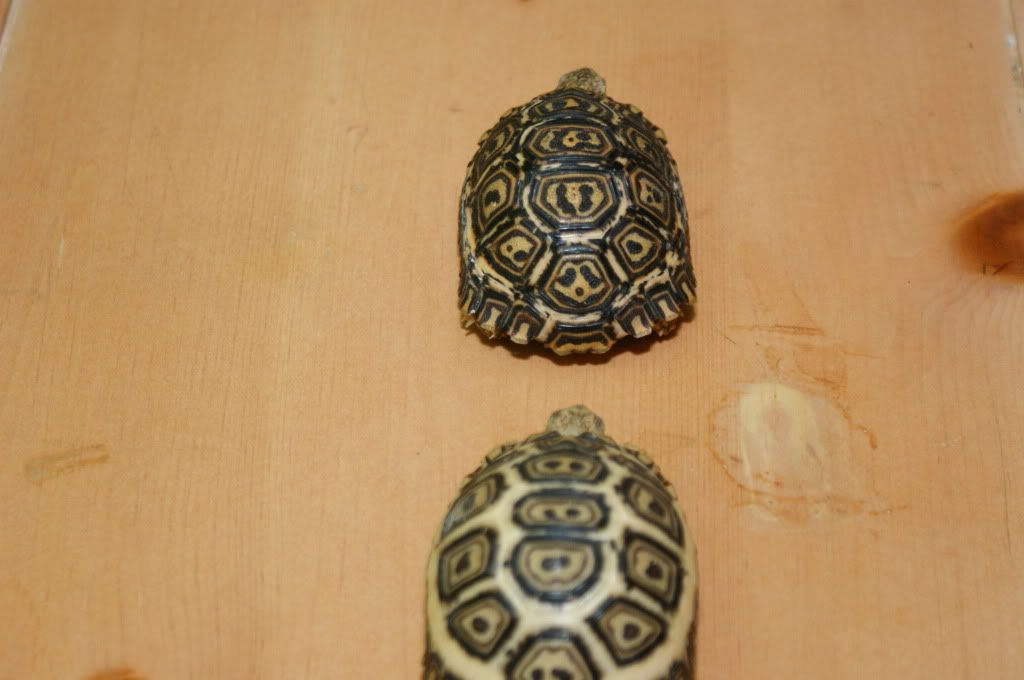Never started one of these but just wanted to throw it out there and see what everyone else had to say. This is primarily directed towards leopards but I'm sure could be asked of other species also.
Question:
Do torts in cooler temps have shells that grow darker than those who are in warmer climates. Sort of an adaptation to warm up faster or stay cooler depending on climate.
Haven't done very much research on it, just testing the waters on what everyone else (those of you who have been into this a lot longer than myself) might know or think.
Question:
Do torts in cooler temps have shells that grow darker than those who are in warmer climates. Sort of an adaptation to warm up faster or stay cooler depending on climate.
Haven't done very much research on it, just testing the waters on what everyone else (those of you who have been into this a lot longer than myself) might know or think.



